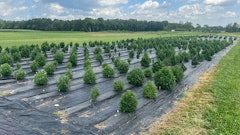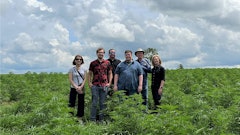We’re accustomed to reporting industry happenings to you, but this month we have our own (very exciting) news to share.
Planning for our 2020 Cannabis Conference is officially underway, and we are thrilled to announce and welcome this year’s advisory board members to our team, who will help shape the educational program for the event. And if you haven’t heard, our fourth annual conference will take place at Paris Las Vegas Hotel & Casino, April 21-23, 2020. The conference advisory board members have a wide range of industry knowledge, and you can learn more about them by visiting CannabisConference.com/page/cannabisboard.
We’re working with these industry experts to deliver the same well-respected, high-level cultivation- and dispensary-focused sessions we’ve offered in previous years. But the 2020 conference will also feature something completely new: We are introducing another educational track this year to serve the newly legal U.S. hemp industry and emerging hemp markets. Last year, 90 of your cannabis industry peers and leaders shared their expertise and insights on essential topics ranging from proper lighting and plant nutrition to managing investor relations and creating a winning license application. This year’s hemp education track will deliver the same high-quality content for plant-touching businesses that attendees have come to expect. For more details about speakers and sessions, or to register, visit CannabisConference.com.
And that leads to our next big announcement: We have officially launched the Hemp Grower website and weekly enewsletter. Led by the team that brings you Cannabis Business Times and Cannabis Dispensary, Hemp Grower will have the same foundation in editorial quality and dedication to its readers as its sister magazines. This new brand will deliver news stories and in-depth business and cultivation features on the hemp industry in the U.S. and abroad to help readers stay in-the-know with the latest challenges, strategies, opportunities and happenings in this burgeoning marketplace. (You can learn more about Hemp Grower and sign up for the weekly enewsletter here: HempGrower.com/form/newsletters.) Later this year, we will publish the first issue of Hemp Grower magazine, dedicated to serving cultivators, business owners and managers, and other professionals in this segment of our ever-evolving cannabis industry.
This new brand will support CBT in its mission to provide you with the insights you need to ensure your and your business’s success, including content about the rapidly growing hemp industry.
We are excited to welcome many of you as readers of Hemp Grower and to host you all at Cannabis Conference 2020.




















